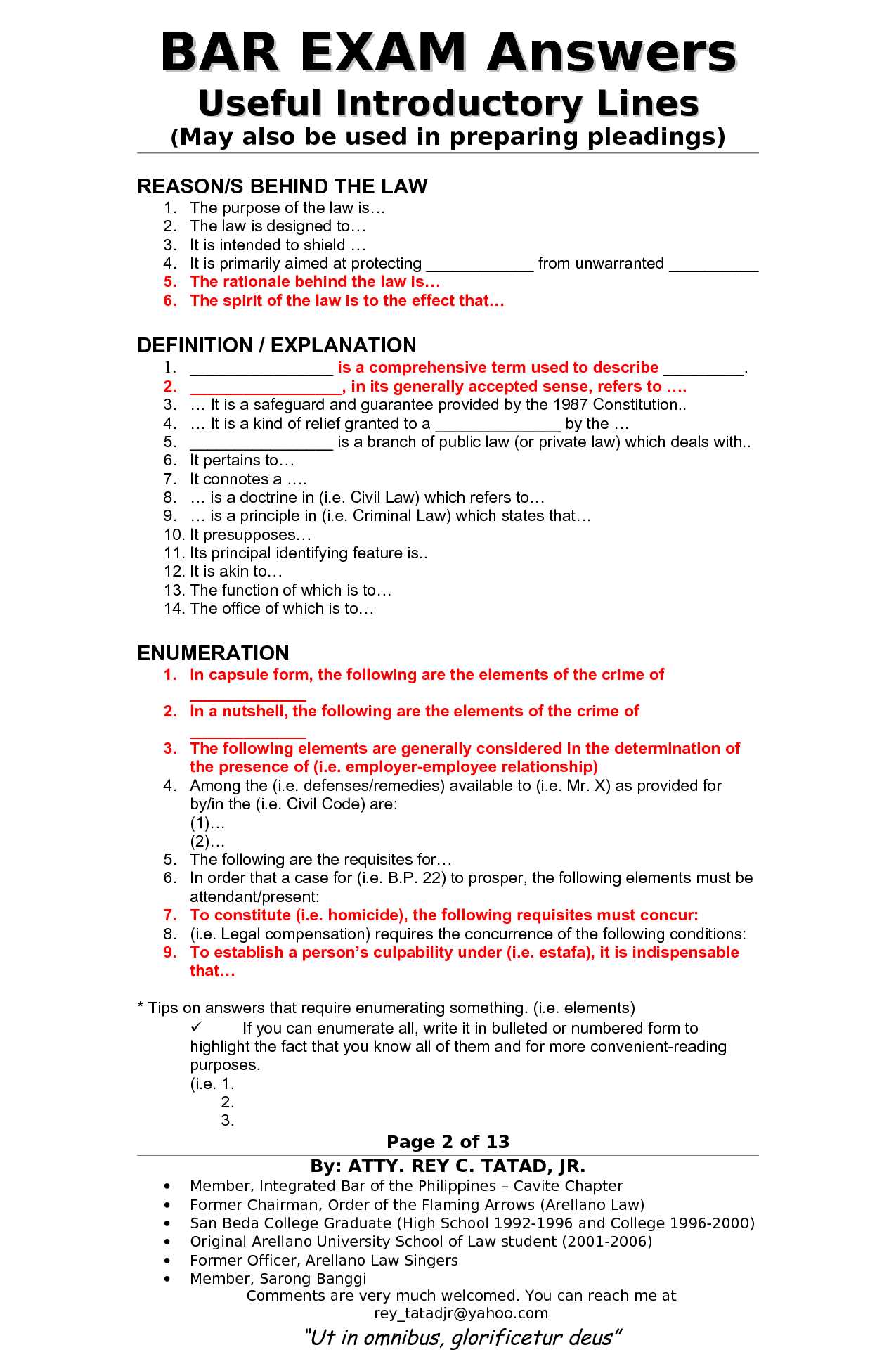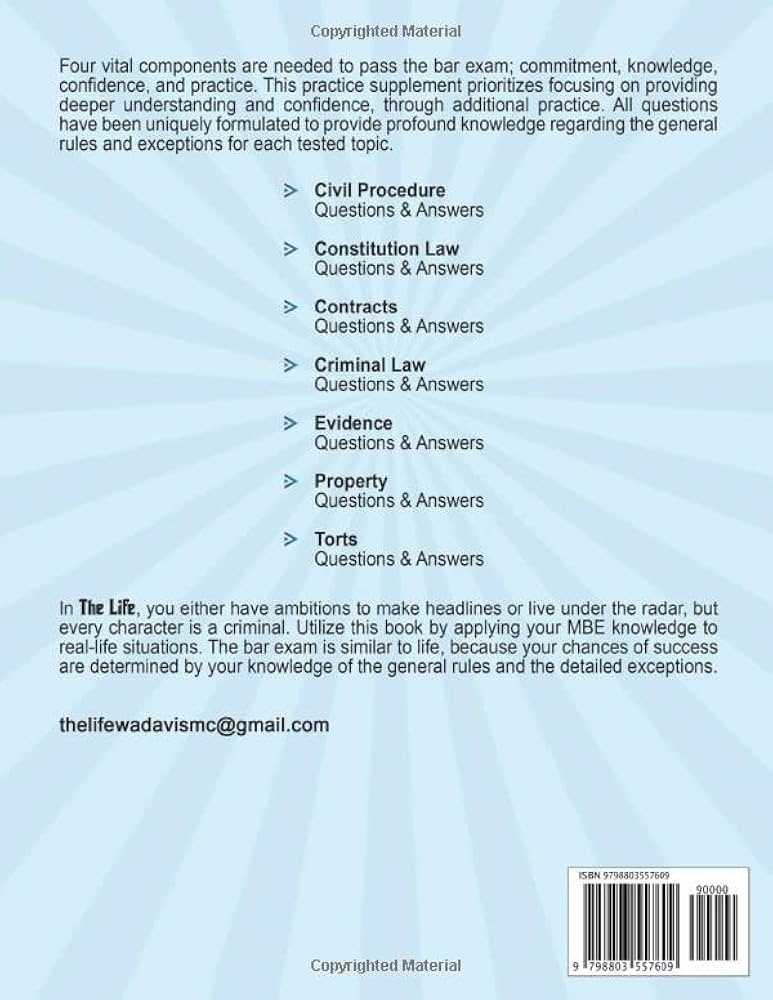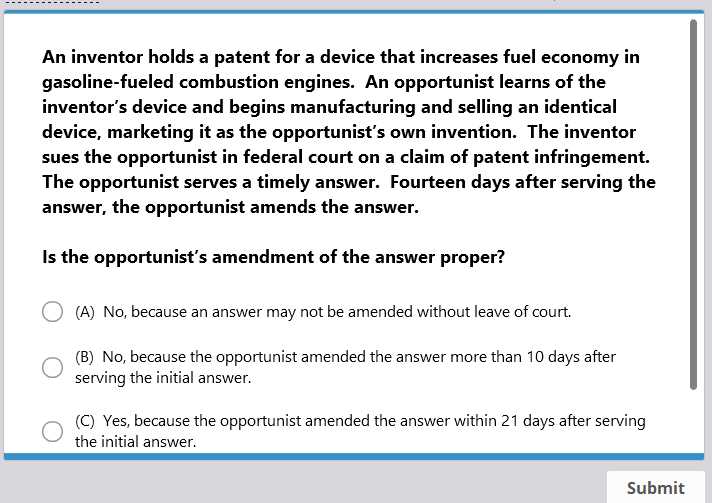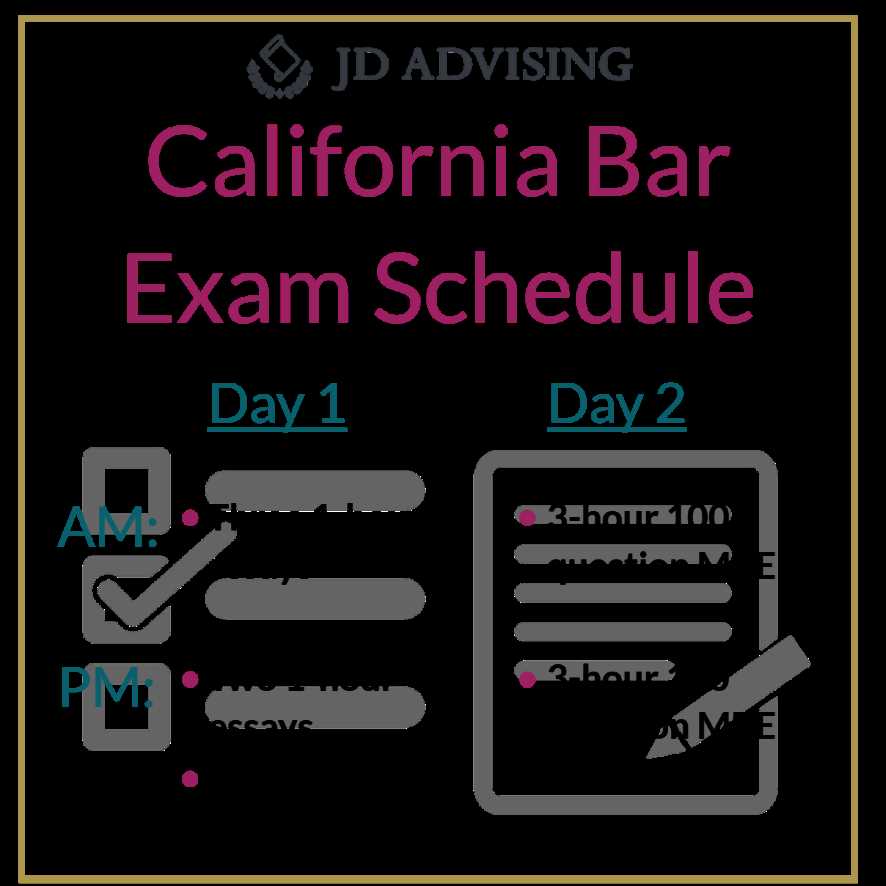
Success in the legal field requires more than just knowledge of the law; it involves the ability to communicate complex legal concepts clearly and concisely. For those preparing for a legal qualification, demonstrating your understanding in written form is a critical skill. It’s not just about what you know, but how effectively you convey that knowledge within strict time limits and under pressure.
In this guide, we explore key techniques for crafting well-structured and persuasive responses that will help you excel in any high-stakes legal assessment. Whether it’s addressing multiple parts of a hypothetical scenario or analyzing intricate legal arguments, the ability to present your thoughts logically and convincingly is crucial. With the right approach, you can transform your expertise into clear, concise, and compelling legal writing.
Effective preparation involves mastering essential strategies such as understanding the task at hand, organizing your ideas, and applying the relevant legal principles. By focusing on clarity, coherence, and logical reasoning, you can navigate even the most challenging tasks with confidence.
How to Answer Bar Exam Questions
In legal assessments, responding effectively requires more than just recalling information. The ability to construct well-organized, coherent, and persuasive responses is essential for demonstrating your understanding of complex legal issues. Crafting a strong reply involves careful analysis, structured argumentation, and clear communication.
Follow these essential strategies to improve your response skills:
- Read the Prompt Carefully: Ensure that you fully understand the task before beginning. Identify key elements and instructions in the scenario.
- Analyze the Legal Issues: Break down the scenario into its core legal problems. Determine which principles are applicable and how they relate to the facts.
- Organize Your Thoughts: Structure your response using clear paragraphs. Begin with an introduction, followed by the legal analysis, and conclude with a summary.
- Use the IRAC Method: Present the Issue, Rule, Application, and Conclusion. This structured format ensures clarity and thoroughness in your analysis.
- Be Concise and Direct: Stick to the relevant legal issues. Avoid unnecessary details and extraneous information.
- Provide Strong Justifications: Support your analysis with relevant case law, statutes, or legal principles. Ensure your reasoning is logical and well-explained.
By following these strategies, you can effectively address complex scenarios and demonstrate your legal expertise under pressure. Remember, practice and preparation are key to mastering this skill and achieving success in any legal evaluation.
Understand the Question Prompt Thoroughly
One of the most important steps in tackling a legal challenge is fully understanding the task at hand. Without a clear grasp of the issue presented, your response will lack direction and focus. Carefully interpreting the prompt ensures you address the correct points and avoid irrelevant information. A thorough analysis of the language used is essential to determine what is being asked and how to approach it strategically.
Key Elements to Identify
Before diving into your response, take a moment to dissect the prompt. Look for specific details that highlight the central issue, legal principles, and any instructions or sub-questions that must be addressed. Understanding these elements will guide your response and ensure you stay on track.
| Element | Description |
|---|---|
| Facts | Identify key facts and details that are directly relevant to the legal issues. These will inform your analysis. |
| Issue | Pinpoint the legal problem or conflict at the heart of the scenario. This is the main question you must address. |
| Instructions | Note any specific instructions on how to approach the response. These can dictate the structure or focus of your answer. |
| Legal Concepts | Look for terms or phrases that indicate the legal concepts to apply, such as statutes, case law, or doctrines. |
Practice Thorough Analysis
Once you’ve identified the key elements, it’s important to take time to reflect on how they interact. Consider the implications of each detail and how it influences the overall response. This careful analysis helps ensure that your reply is both comprehensive and precise, addressing the right points with clarity.
Read Every Question Carefully
Reading the prompt attentively is a fundamental step in any legal assessment. It is easy to overlook crucial details when under pressure, but a careful review can prevent mistakes and misinterpretations. Each prompt may contain subtle cues that guide your analysis, and rushing through it can lead to incomplete or irrelevant responses. Taking time to fully understand the wording ensures you address the task correctly and efficiently.
Identify Key Details
As you read the scenario or prompt, pay close attention to specific instructions or facts that stand out. These details may hint at particular legal principles you must apply or highlight issues that need to be addressed. Look for keywords and phrases such as “must,” “should,” or “consider,” which often indicate the most important elements to focus on.
- Keywords: Look for terms that define the scope of your response, such as “liability,” “negligence,” or “defense.” These guide your legal framework.
- Time Constraints: Pay attention to any deadlines or time-specific elements mentioned in the prompt, which can affect your approach to the scenario.
- Complex Scenarios: If the scenario presents multiple issues or requires addressing different perspectives, make sure to tackle them in order of relevance.
Revisit the Prompt if Needed
If at any point you feel uncertain about the scenario or instructions, don’t hesitate to reread it. Rushing through the text can cause you to miss essential points that may alter the outcome of your response. It’s always better to take an extra moment to clarify the prompt than to provide an incomplete or incorrect analysis later.
Structure Your Answers Clearly
A well-organized response is crucial for conveying your legal reasoning effectively. Clear structure ensures that your analysis is easy to follow and that all relevant points are addressed in a logical order. A disorganized reply can confuse the reader and make it difficult to understand your argument, regardless of the strength of your legal knowledge.
Follow a Logical Flow
Each section of your response should naturally lead to the next, building on the previous points. A clear structure not only helps the reader follow your reasoning but also allows you to cover all required aspects systematically.
- Introduction: Briefly outline the main issue and state your overall position. This sets the stage for your detailed analysis.
- Body: Break down the analysis into manageable parts. Address each legal issue individually and use relevant case law or statutes to support your argument.
- Conclusion: Summarize your findings and state your final position. Make sure to offer a clear and concise answer based on your reasoning.
Use Clear Paragraphs and Headings
Paragraphs should be used to separate different points and stages of your analysis. Within each section, use headings or subheadings to highlight key topics, making it easier for the reader to navigate through your response. Avoid lengthy, dense paragraphs, as they can make it harder to grasp your main ideas.
- Use bullet points: When listing multiple factors, arguments, or cases, bullet points can make your response more readable and structured.
- Stick to one point per paragraph: Ensure that each paragraph focuses on a single issue or aspect of the analysis to maintain clarity.
Focus on Key Legal Principles
When tackling a legal scenario, it’s essential to identify and apply the most relevant legal concepts. A thorough understanding of these principles will guide your analysis and help you craft a well-supported response. Instead of getting caught up in every detail, focus on the central legal doctrines that directly affect the outcome of the case or issue at hand.
Identify Relevant Legal Doctrines
Each scenario may involve a variety of legal principles, but not all are crucial to the specific issue presented. Prioritize the doctrines that are central to the task, ensuring that your response is both focused and precise. Below are some common legal principles to look for:
- Statutory Law: Recognize when a specific statute or regulation applies to the case. Highlight its relevance and explain how it influences your response.
- Case Law: Identify precedents or judicial decisions that are directly applicable to the situation. Refer to these rulings to support your arguments.
- Legal Doctrines: Look for established legal theories, such as negligence, strict liability, or fiduciary duty, that govern the issue at hand.
Apply the Principles Effectively
Once you’ve identified the key principles, the next step is to apply them to the facts presented. Make sure your reasoning is clear and logically connects the relevant legal concepts to the scenario. This application demonstrates your understanding of the law and your ability to use it in practice.
- Analyze the Facts: Link the facts of the case to the legal principles. Show how each detail impacts the legal analysis.
- Provide Strong Justifications: Use the identified legal doctrines to back up your conclusions. Clearly explain why the law applies in a given situation.
Use IRAC Method to Organize Responses

One of the most effective ways to structure your legal analysis is by using the IRAC method. This approach helps break down complex legal issues into manageable parts, ensuring clarity and consistency in your response. By following a logical sequence of identifying the issue, stating the relevant rules, applying them to the facts, and drawing a conclusion, you can provide a well-organized and persuasive analysis.
IRAC Breakdown
The IRAC method consists of four key steps, each of which plays a crucial role in organizing your response. By focusing on these elements, you ensure that all aspects of the legal scenario are addressed in a systematic and clear manner.
| Step | Description |
|---|---|
| Issue | Identify the main legal issue or problem presented by the facts. This is the foundation of your analysis. |
| Rule | State the relevant legal principles or laws that apply to the issue. This could include statutes, case law, or established doctrines. |
| Application | Apply the rule to the facts of the case. This is where you analyze how the law fits the scenario and make logical connections between the two. |
| Conclusion | Summarize your findings and state the outcome. Clearly indicate the legal result based on the analysis you’ve provided. |
Benefits of the IRAC Approach
Using IRAC not only ensures that your response is clear and organized but also helps you stay focused on the critical elements of the task. This method provides a consistent framework that allows you to address each part of the scenario without missing any key details. By applying this structure, you can demonstrate your legal reasoning in a concise and coherent manner.
Prioritize Relevant Case Law
When addressing a legal issue, referencing the appropriate case law is essential for building a strong and credible argument. Not all precedents will apply equally to the issue at hand, so it’s important to focus on the decisions that are most relevant to the scenario. By selecting the most pertinent cases, you can substantiate your analysis and demonstrate a thorough understanding of the law.
Identify Key Cases
To effectively use case law, begin by identifying the most significant rulings that directly relate to the legal issue. Look for decisions that involve similar facts, legal principles, or issues as those in the prompt. These cases will provide a solid foundation for your argument and help illustrate how the law has been applied in similar situations.
- Relevance: Select cases that share key elements with the scenario you are analyzing. The more directly they apply, the stronger your argument will be.
- Authority: Prioritize rulings from higher courts or more recent decisions, as these are typically more authoritative and reflective of current legal standards.
- Consistency: Use cases that support a consistent legal trend, especially if they align with the issue you’re addressing.
Use Case Law to Support Your Argument

Once you’ve identified the most relevant cases, integrate them into your response by clearly explaining how each ruling applies to the facts of the scenario. Highlight the key points of each case and demonstrate how they guide your legal reasoning. This approach strengthens your analysis and helps ensure that your response is rooted in established legal principles.
- Clarify the Holding: Focus on the holding or the main principle of each case and explain how it influences the present issue.
- Contrast Facts: If the facts of the case differ from your scenario, point out how the differences or similarities impact the application of the ruling.
Be Concise and Stay on Topic
When responding to a legal scenario, it’s crucial to provide a clear and focused analysis. Avoid unnecessary information that may detract from the core issues. A concise response not only saves time but also ensures that your argument is strong and easy to follow. Staying on topic helps to emphasize the most important points and prevents you from veering into irrelevant areas.
Eliminate Superfluous Details
While it may be tempting to elaborate on every aspect of a case, focusing only on the relevant facts and legal principles will make your analysis more effective. Avoid discussing tangential issues or facts that do not directly affect the outcome. This approach ensures that your response remains precise and impactful.
- Focus on Key Elements: Concentrate on the central issues that directly influence your conclusion. This helps streamline your argument.
- Skip Unnecessary Explanations: Only provide background information if it is essential to understanding the main issue. Avoid excessive details or repetition.
- Avoid Personal Opinions: Stick to the legal aspects and refrain from inserting personal thoughts that do not add value to the analysis.
Structure Your Thoughts Clearly
A well-organized response is naturally more concise. Break your analysis into clear sections, each focusing on a specific aspect of the issue. Use headings and paragraphs to make your points easy to follow and ensure that each part of your response contributes directly to the overall argument.
- Logical Flow: Ensure that each point naturally leads to the next, creating a smooth progression of ideas.
- Avoid Repetition: Repeating the same points or rephrasing them multiple times can confuse the reader and weaken your argument.
Practice Writing Under Time Pressure
Effective legal analysis requires not only knowledge but also the ability to work quickly and efficiently under tight deadlines. To succeed, it is essential to practice producing concise, well-structured responses within a set time frame. This not only builds confidence but also ensures that you are able to think critically and apply legal principles under pressure.
Simulate Real-Time Conditions
To prepare for timed conditions, create practice sessions that mirror the constraints of the actual setting. Set a timer and challenge yourself to complete responses within the allotted time. This will help you adjust your pacing and improve your ability to organize your thoughts swiftly while still producing high-quality work.
| Practice Strategy | Description |
|---|---|
| Set Time Limits | Establish strict time limits for each practice session to simulate real exam conditions and improve your speed. |
| Start with Shorter Intervals | Initially, practice under shorter time constraints to build confidence, then gradually increase the time as you improve. |
| Review and Adjust | After each timed session, assess your performance to identify areas for improvement and adjust your strategy accordingly. |
Develop a Time Management Plan
Time management is key to success under pressure. By setting specific goals for each section of your response, you can ensure that you spend an appropriate amount of time on each part without rushing or neglecting any details. Prioritize tasks and allocate your time effectively to avoid getting stuck on one section.
- Allocate Time for Each Section: Assign specific time limits to each part of your response, such as issue identification, rule application, and conclusion.
- Keep Track of Time: Regularly monitor your progress during practice to ensure you’re on track and make necessary adjustments if needed.
- Avoid Overthinking: Avoid spending too much time on a single point; instead, trust your initial analysis and move forward.
Balance Legal Arguments with Facts

In legal analysis, it is essential to strike a balance between theoretical arguments and the facts at hand. While applying legal principles is important, those principles must be directly linked to the specific circumstances of the case. By carefully aligning your reasoning with the facts, you create a well-supported and persuasive argument that addresses both the law and the situation effectively.
Integrate Facts into Legal Reasoning
Each point of your argument should be grounded in the relevant facts of the case. This allows you to demonstrate how the law applies to the specific scenario, showing the examiner that you are capable of connecting theory to practice. Avoid using abstract legal concepts in isolation; instead, tie them to concrete details that help clarify your analysis.
- Reference Key Facts: Always highlight facts that are most relevant to your legal argument. Use these details to support your reasoning and illustrate the application of the law.
- Provide Context: Explain how the facts influence the legal principles you are applying. Context helps demonstrate a deeper understanding of how laws function in real-world situations.
- Clarify Ambiguities: If facts are ambiguous, acknowledge this and explain how you would address the uncertainties within the framework of the applicable law.
Avoid Overloading with Facts
While facts are crucial, overloading your response with irrelevant or excessive details can detract from the strength of your legal argument. Stay focused on the most important elements that contribute directly to the resolution of the issue at hand. A concise approach ensures that your analysis remains clear and that the key points stand out.
- Filter Irrelevant Details: Discard any facts that don’t have a direct impact on your legal analysis, as these can distract from your main argument.
- Prioritize Significant Facts: Choose facts that most strongly support your legal theory, ensuring that they contribute meaningfully to your overall response.
Keep Your Analysis Objective and Neutral
In legal analysis, it is crucial to maintain a fair and impartial perspective. Your response should focus on the facts and the law, without personal biases or emotional influences. By keeping your analysis neutral and objective, you present a clear and logical argument that is based solely on the principles and evidence at hand, rather than on personal preferences or opinions.
Avoid Personal Biases
One of the most important aspects of legal reasoning is the ability to set aside personal beliefs and preferences. Even if you have strong opinions about the case or its outcome, these should not influence your analysis. Stick to the facts and apply the law impartially, ensuring that your argument is based on sound reasoning rather than on personal judgments.
- Stay Detached: Treat all facts and legal issues equally, regardless of personal feelings or perceptions about the case.
- Use Objective Language: Avoid language that conveys emotion, personal judgment, or bias. Stick to factual descriptions and legal terminology.
- Acknowledge Different Perspectives: Consider and address alternative arguments or viewpoints, demonstrating your ability to evaluate the case from multiple angles.
Focus on Legal Principles, Not Opinions
Your response should prioritize legal principles and their application to the facts of the case. Ensure that your argument is grounded in established laws, precedents, and rules, rather than in subjective interpretations or personal opinions. This helps to build a more credible and professional response, one that is rooted in legal reasoning rather than personal sentiment.
- Reference Case Law: Support your analysis with relevant case law or statutes, which will reinforce your argument’s objectivity.
- Stay Within Legal Boundaries: Avoid speculation or hypothetical scenarios that are not directly related to the question. Focus on what is legally relevant and applicable.
Avoid Overcomplicating Your Answers
When crafting a response, it is important to keep your analysis clear and concise. Overcomplicating your explanation with unnecessary details, convoluted reasoning, or excessive technical language can confuse the reader and detract from the strength of your argument. A simple, straightforward approach is often the most effective way to present your legal reasoning.
Focus on delivering your points in a logical, easy-to-follow structure. Use plain language and avoid overloading your response with irrelevant information. While it’s important to demonstrate a thorough understanding of the law, it is equally essential to communicate your ideas efficiently and effectively.
- Stick to the Essentials: Address the key issues without wandering into tangents. Focus only on the facts and laws that are directly relevant to the question at hand.
- Avoid Excessive Detail: While thoroughness is important, providing unnecessary background information or overly detailed explanations can distract from the main points.
- Use Clear and Direct Language: Choose words that are precise and clear. Avoid jargon or overly complex sentences that could make your analysis difficult to follow.
By avoiding overcomplication, you ensure that your analysis remains effective and accessible, making it easier for the reader to grasp the key points and understand the strength of your argument.
Review Model Answers for Insight
Studying well-crafted model responses can offer valuable insight into how to effectively organize and present your legal reasoning. These examples provide a clear illustration of how to structure your arguments, apply relevant legal principles, and stay on topic. By reviewing high-quality answers, you can learn how to sharpen your own writing and approach the task with greater precision.
Understand the Structure of Strong Responses
Model answers often exhibit a well-organized structure that makes complex legal issues easier to follow. Pay attention to how the response begins with a clear introduction, proceeds logically through the legal analysis, and concludes with a strong, concise summary. This structure not only helps in conveying arguments effectively but also ensures that all relevant issues are addressed in an organized manner.
- Introduction: Learn how to start with a brief overview of the key points you will address.
- Legal Analysis: Observe how the legal principles are applied to the facts, ensuring clarity and coherence.
- Conclusion: Study how model answers wrap up with a concise and impactful conclusion that ties everything together.
Recognize Effective Legal Reasoning
In addition to structure, model answers demonstrate the application of sound legal reasoning. Focus on how the response integrates case law, statutes, and precedents, while remaining objective and neutral. These examples can show you how to balance facts with legal principles, making your analysis both robust and persuasive.
- Use of Precedents: Notice how relevant case law is integrated into the argument, reinforcing key points.
- Legal Terminology: Observe the correct use of legal terminology that enhances clarity and precision.
- Argumentation Style: Pay attention to the tone and style of the reasoning, aiming for an objective and impartial approach.
By reviewing model responses, you can gain a deeper understanding of the expectations and refine your own ability to craft a persuasive, well-reasoned response.
Stay Calm and Manage Your Time

Effective time management and maintaining composure are critical for success when tackling challenging assessments. Stress can easily derail your performance, so it’s essential to stay calm and focused throughout the process. By managing your time efficiently and approaching each task with clarity, you can maximize your ability to respond thoughtfully and thoroughly.
Prioritize Tasks and Allocate Time Wisely
One of the most important strategies is to allocate time based on the complexity of each section. Start by scanning through all the prompts to gauge their difficulty. This will allow you to plan which ones to address first and which require more detailed analysis. Stick to your plan, but remain flexible if you find that one task needs more time than initially expected.
- Start with the Easy Questions: Begin with the tasks you find simpler to build confidence and momentum.
- Allocate Time Proportionally: Set a specific amount of time for each section, adjusting based on its complexity.
- Keep Track of Time: Use a watch or timer to ensure you don’t exceed the time limits for each section.
Stay Focused and Avoid Panic
It’s easy to feel overwhelmed, especially if you encounter difficult sections. However, staying calm is essential for maintaining clarity of thought. If you get stuck, move on and come back later–there’s no need to waste valuable time on a single task. Focus on the present moment and don’t dwell on past mistakes or future concerns.
- Breathe Deeply: Take a few deep breaths to calm your nerves if you feel stress building.
- Stay Positive: Maintain a positive mindset, reminding yourself that you are prepared and capable of handling the task at hand.
- Don’t Overthink: Stick to your planned approach and avoid second-guessing yourself too much.
By staying composed and managing your time effectively, you can enhance your performance and ensure that each task is addressed with the care and attention it deserves.
Address Each Part of the Question
Thoroughly addressing every component of a given prompt is essential to providing a complete and effective response. Often, prompts are structured with multiple elements, each requiring specific attention. Failing to address one or more aspects of the task can lead to an incomplete analysis, even if the rest of the response is well-developed. To ensure you meet all requirements, break down the task and systematically approach each part.
Break Down the Prompt into Manageable Segments
The first step in approaching any complex prompt is to deconstruct it. Identify the different elements that need to be covered and understand the connections between them. This will help you focus on what is required and ensure that no part is overlooked. By addressing one point at a time, you maintain clarity and precision in your response.
- Look for Keywords: Identify words that indicate what you must do, such as “analyze,” “discuss,” or “apply.” These will guide your approach.
- Separate the Issues: If the prompt asks for multiple analyses, break them down into smaller, manageable questions.
- Prioritize the Main Points: Ensure that the core elements are addressed in a logical order.
Ensure a Complete Response for Each Part
Once you have broken down the task, give each part of the prompt the attention it deserves. For each issue, provide a concise but thorough explanation, supporting your arguments with relevant examples or principles. Be careful not to leave any part unfinished or inadequately addressed, as this could weaken the overall strength of your response.
- Stay on Topic: Avoid wandering off-topic; focus on answering the specific query in the prompt.
- Provide Relevant Support: Use appropriate legal principles, cases, or facts that directly relate to each issue.
- Be Detailed but Clear: Ensure that each response is detailed enough to fully explain your reasoning, but clear enough to be easily understood.
By addressing each part of the task systematically, you will not only strengthen the coherence of your response but also demonstrate a thorough understanding of the material.
Proofread Your Responses for Accuracy
Ensuring the accuracy of your response is crucial for presenting a clear and coherent argument. After writing your initial thoughts, take the time to review your work carefully. This allows you to identify any errors, inconsistencies, or areas where clarity may be lacking. Proofreading is an essential step in improving the overall quality of your submission, as it helps to refine your analysis and ensures that every statement is correct and well-supported.
Check for Logical Consistency
One of the first things to focus on during your review is whether the flow of your argument makes sense. Ensure that all points are logically connected and that your reasoning is sound. If any part of your response seems unclear or unsupported, clarify it before finalizing your work.
- Review the Structure: Make sure your response is well-organized and follows a logical progression.
- Confirm Your Claims: Double-check any assertions you’ve made and ensure they are backed by relevant facts or legal principles.
- Test for Coherence: Read through your response to ensure the various sections are tied together effectively.
Look for Errors in Grammar and Punctuation
While content accuracy is paramount, your response must also be clear and easy to read. Poor grammar, spelling mistakes, and punctuation errors can undermine the professionalism of your submission and create confusion. Always take time to correct these issues before submitting your work.
- Check for Typos: A simple spelling error can change the meaning of your response, so look for any small mistakes.
- Correct Grammar Mistakes: Ensure that your sentences are well-constructed and easy to understand.
- Use Proper Punctuation: Proper punctuation helps guide the reader through your arguments and makes your points easier to follow.
By carefully proofreading your work, you enhance both its accuracy and readability, improving your overall performance. Remember, small mistakes can have a significant impact on the clarity and effectiveness of your response.